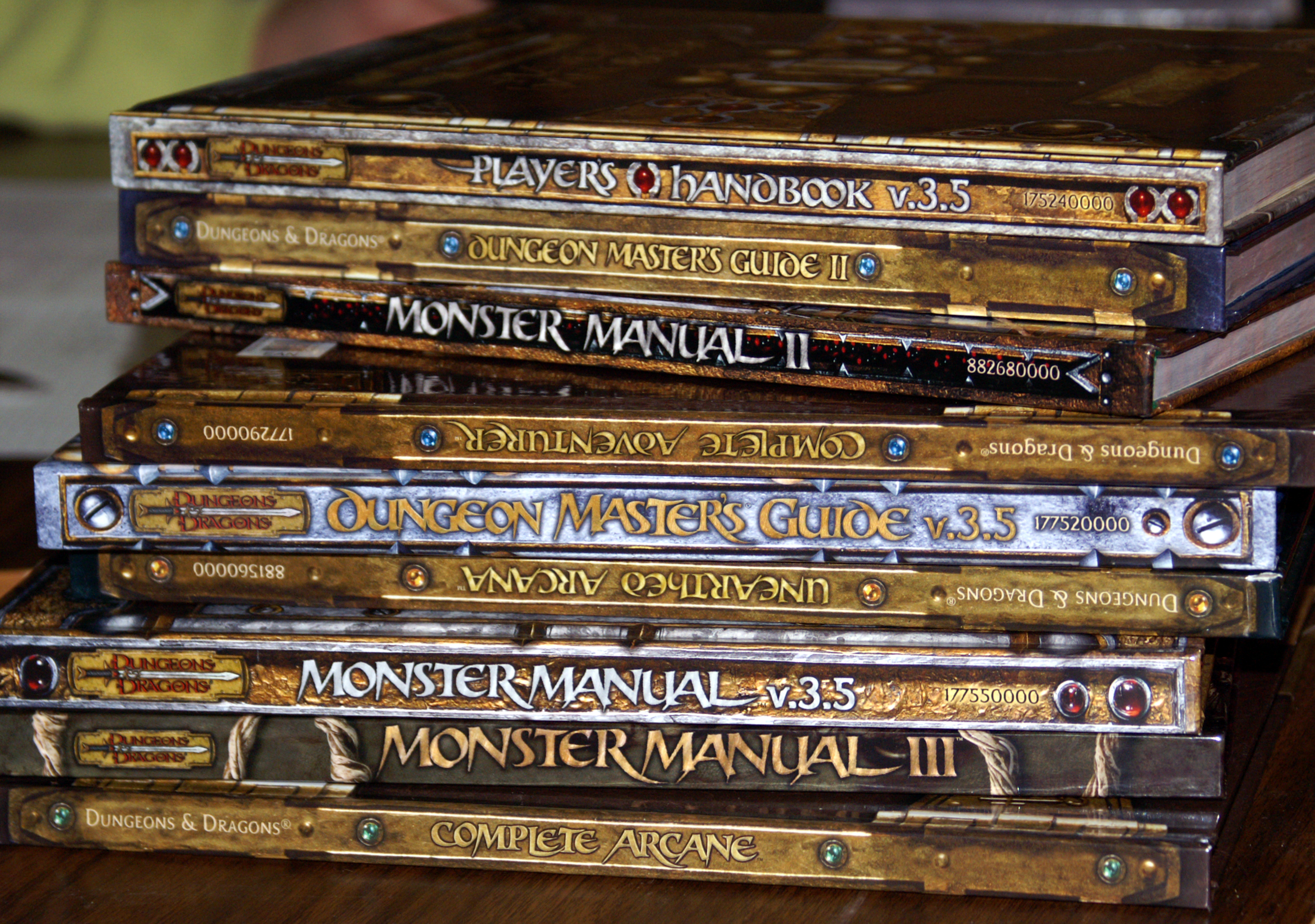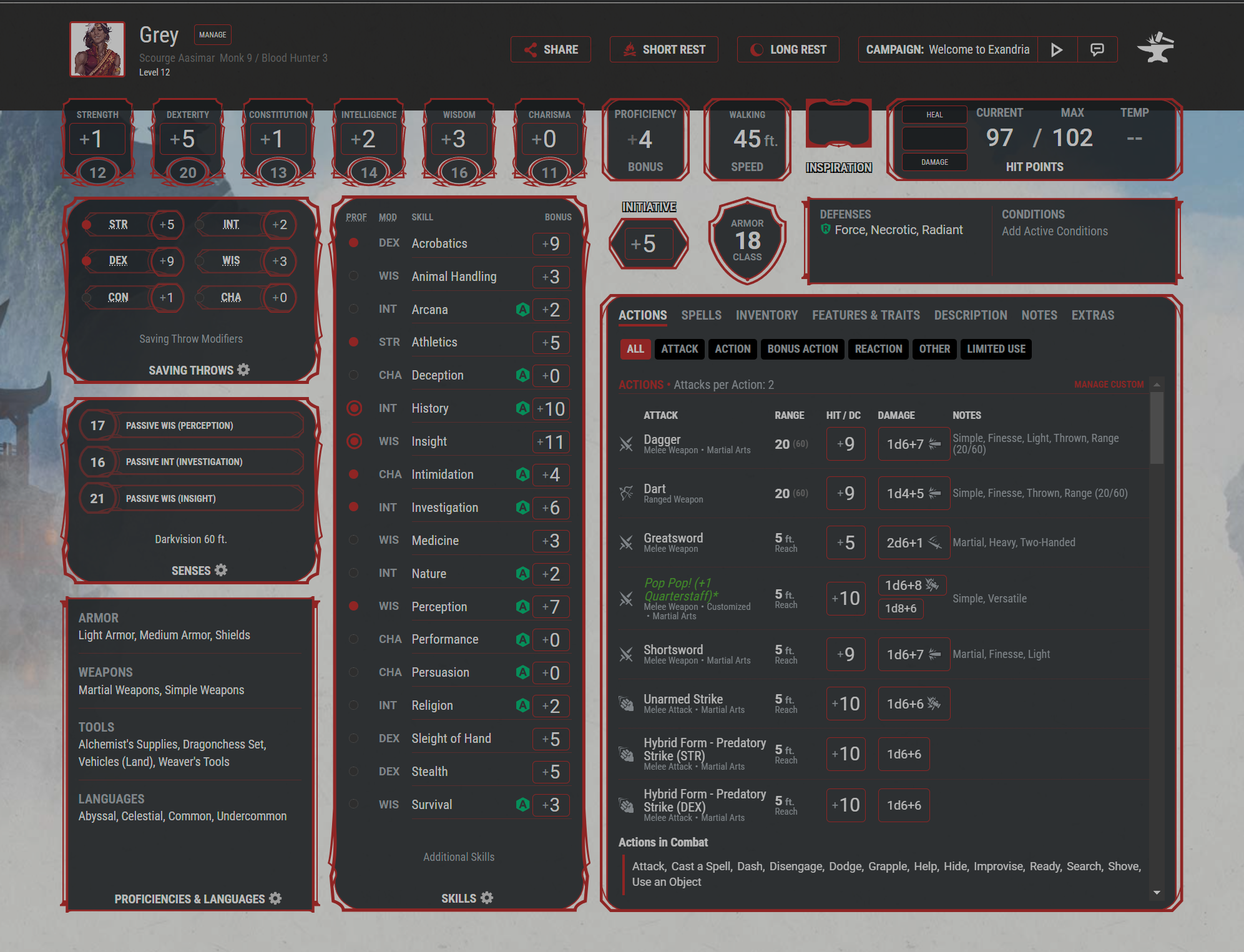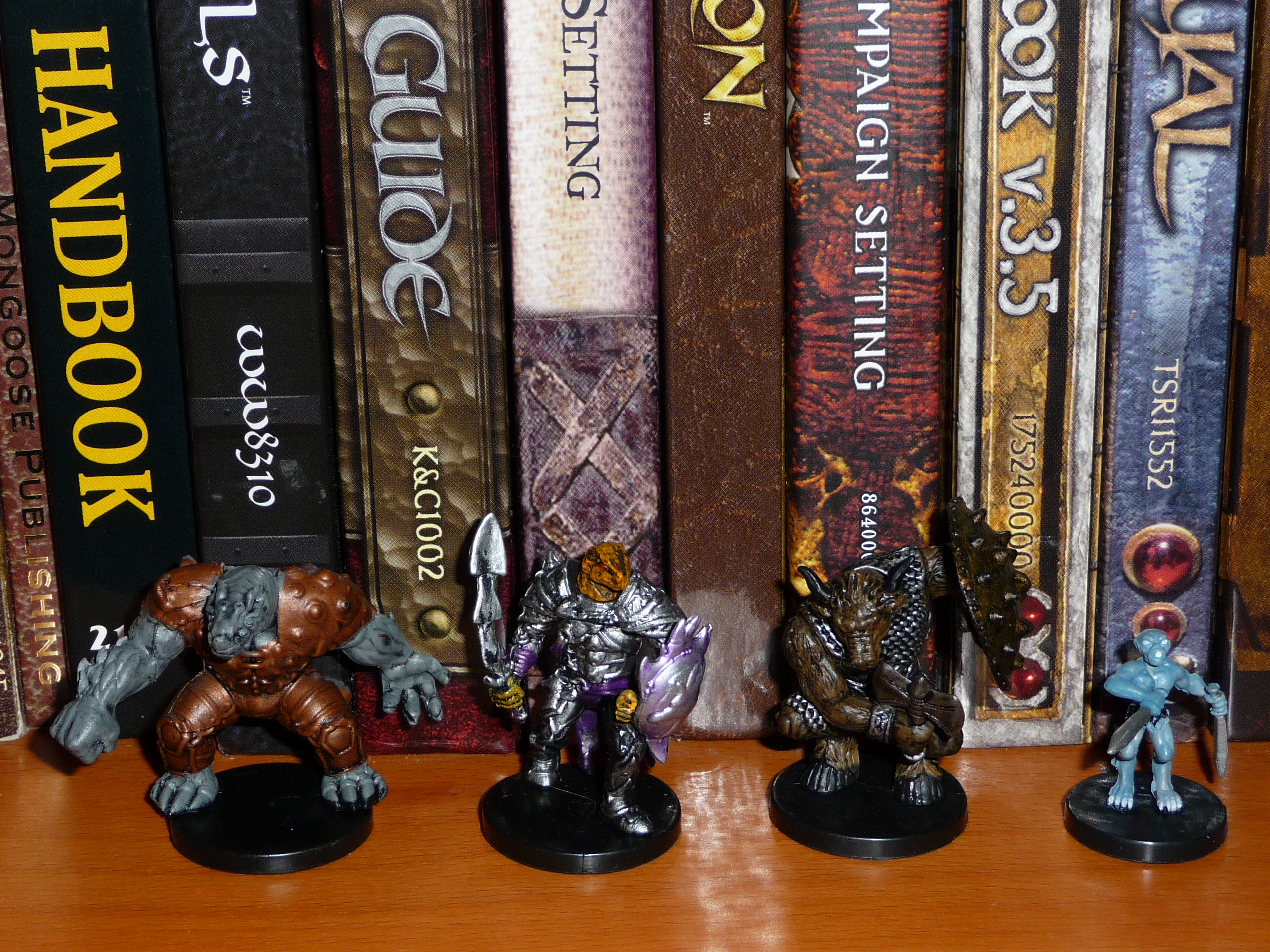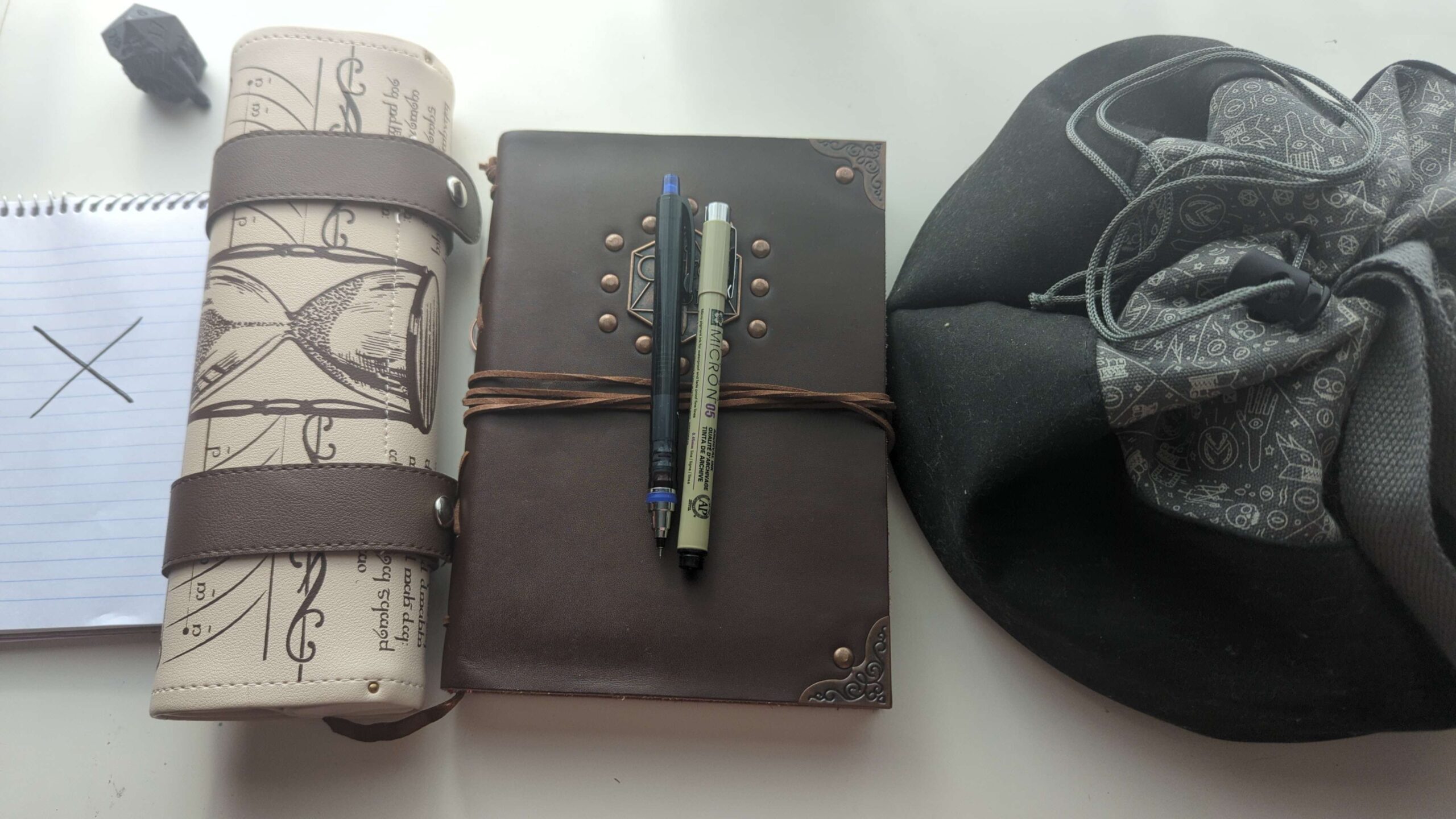Table of Contents Show
With the release of the video game “Baldur’s Gate 3″ (Larian Studios, 2023) along with the movie Dungeons & Dragons: Honor Among Thieves (dir. John Francis Daley, Jonathan Goldstein; 2023), and web series such as Critical Role (2015 -) or Dimension 20 (2018-), tabletop role-playing games (TTRPGs) such as “Dungeons and Dragons” (D&D) have once again come to the forefront of pop culture. When looking at the seemingly endless plots, maps, and figurines, it is easy to see how people fall in love with the game, but also how a new player could be quickly overwhelmed by the sheer amount of “Dungeons and Dragons” content.
“Dungeons & Dragons” (D&D)
“Dungeons and Dragons” is a great starting point for new TTRPG players; it is one of the oldest tabletop gaming systems, and it consists of a set of rules or guidelines designed to help resolve actions in the game’s narrative. If there is a question as to whether a choice a person makes will go as they intended, the gaming group uses the ruleset to determine the outcome(s) of their choice. The one who presents the narrative is called the “Dungeon Master” (DM) and the other people involved are called “players,” who interact with the world through their “Player Characters.”
Since it’s been around so long, there have been many add-ons both officially produced by Wizards of The Coast and created by players that cover just about any setting one would like to play. From a more traditional Tolkien-style fantasy to an alien space race, D&D can be used to experience a story in a wide variety of settings, all without needing to learn all new rules. With the advent of its 5th edition, the game has never been easier to learn.

While there are logical reasons to pick “Dungeons and Dragons” over other TTRPG systems, there are many personal reasons why people play D&D rather than another system. The game provides a sense of community for some, while for others it provides a creative outlet. Making clear your motivation for playing D&D is a good first step to becoming less overwhelmed since you can communicate that motivation to other players.
Players, Assemble!
When first starting to play D&D, one may have to look around to find a gaming group if they have not already been invited to one. One popular suggestion is to find “one-shots.” A one-shot is an adventure completed in one “session” or one meeting, while a “campaign” is an adventure spanning multiple sessions and can span over months and years.
The “friendly local game store” can provide a great opportunity to see the game in action. The people there are usually from around the store’s area and this shared community can help to break the ice when forming new connections. Often one-shots may be all gamers at the store play, allowing one to play with a few different people and in a few different settings without the expectation of a long-term commitment that a campaign would require.
One can also find an in-person gaming group at school, work, or other clubs and hobbies they are part of. However, if no such groups exist, those who may be more technologically inclined can use the Discord application to find community chats called “servers” where you can join and share a virtual space with tabletop gaming hobbyist groups. The popularity of Discord along with the dawn of applications such as D&D Beyond,1“D&D Beyond,” Wikipedia, May 3, 2024. a virtual toolset “game companion” for D&D as well as the advancements in video calls and screen sharing means that gaming groups that play exclusively online are only becoming more common.

While there are a few ways to experience D&D, once one starts to do so, a list of characteristics they like and dislike about the system will form along with questions such as whether they would prefer to be a player or a narrator and whether they’re a more narratively driven or combat driven player. This experience will guide them to the game and group in which they fit best.
While the psychology behind D&D is another discussion in and of itself, it’s important to note players often feel a sense of ownership over their characters, so what happens to them is likely to affect them personally. Even in a combat-focused game, unexpected interpersonal issues may arise and communication between players is crucial, particularly if one has been invited to join a group, keeping in mind that everyone has their way of playing “Dungeons and Dragons.”
D&D: “Styles Of Play”
Despite the concept of “Dungeons and Dragons” being simple at its surface, many different styles of play exist due to its non-restrictive nature. “Styles of play” describes a term used to sum up the goals players have when they play the game. While these concepts are not mutually exclusive, two major play style archetypes are narrative play or being “role play (RP) focused” and combat-driven play, which is also known as “min-maxing.”

While one may struggle to find the right game, keeping these ideas in mind along with some references such as this video entitled “2Different Kinds of Players | Running the Game“ 2Different Kinds of Players | Running the Game. YouTube, uploaded by Matthew Colville. 28 March. 2016. by Matt Coville will give you a guide for what to look for in a game group as they try D&D out and discover what kind of player they are.
D&D: “RP Focused”
“Narrative Players” or “RP-focused players” value the story and events around their characters more than the numerical damage their character does. Their gameplay choices are informed by the narrative choices they make and their goal is to “be their character.” While their characters can be very effective at taking down enemies, the reasons behind the choices they make for their characters are typically focused on aesthetics and narrative.
For example, if their character was battling a foe that they feared, they may choose to give their character a handicap at risk of losing the fight to increase their emotional investment in the story.
D&D: “Min-Maxers”
Players who can be described as having the “Min-Maxing play” style focus on gameplay benefits. Any choices that help them take down enemies faster or support their fellow players more are the ones they select. They focus on making their characters as efficient as possible. While narrative can be used to justify these decisions, it is not the reason that they are made.
For example, they may choose an ability that increases what their character does without thinking about how doing so may narratively change their character. However, this can also create a fascinating battle of tactics.
The Most Crucial Session: Session 0
When one decides to play D&D, most often in a campaign or multi-session game, a “session 0” is a preview as to what they might expect in the game. Discussion of narrative themes and tone, gaming tools that will be used, and scheduling are all often topics included in it. D&D is a storytelling medium and topics such as abuse, trauma, gore, and horror may come up in the story.
Knowing what topics may come up can make sure no one is taken off guard and made uncomfortable. While a “session 0″ may seem deadly serious from this description, its only job is ensuring everyone is on the same page and knows what is going on in the game. In the case of a one-shot, these things can be discussed individually with players beforehand or the first 10 minutes of the game session can be used to discuss rules and expectations.
A “session 0″ can also be a great way for players to get to know each other for the first time or break the ice and catch up if they have not seen each other in a while. Getting everyone on the same page results in a smoother gaming experience and the resolution of any player questions before the game rather than during it. However, no s”ession 0” is perfect.
While every DM has its tools and methods to help guide the group if they go off-track, some common ones are considered broadly useful.
D&D: Gaming Tools
Gaming tools encompass anything used to ensure the well-being and fun of everyone involved in a tabletop game. None of them are strictly necessary, but they are simple, useful and only take a few minutes to discuss.

Those who are starting their own group or simply playing in a one-shot may find them helpful. These tools can help to mesh together different play styles and unlock more game opportunities.
X-Card
One such tool is the “X-Card” 3 “X-Card.” Wikipedia, August 9, 2023. Designed by John Stavropoulos, the x-card is an X on an index card that players tap or hold up to edit some content in the story. In online play, it can be replaced by an X or similar emoji that is sent to the other players. As mentioned before, uncomfortable or maybe even triggering topics may come up in a game and an X-Card can help clarify boundaries without feeling like an intrusion.
Originally designed for use in gaming conventions where one plays with strangers, the “x-card” helps foster awareness of the fact that the well-being of people is paramount to the game. Even if it is not used, the “x-card” can help players feel more comfortable and can get them more involved in the game since any boundaries that may be crossed will be brought up in a way that makes it so they don’t have to elaborate on them and the game can continue.
Lines & Veils
Lines & Veils4Zelda, Bee. “Guest Blog: An Introduction to Lines and Veils.” Roll20 Blog, June 16, 2023. are ways of defining content that is not discussed or not elaborated on. Lines are hard content boundaries that never will be crossed in a game and veils are content that is allowed to be discussed but not elaborated upon. An example of a scene resulting from a veil is “Two characters close a door. The scene fades to black as they head towards the bed.”
While the implication of what the two characters are doing is there, no further description or elaboration is present in the scene. The DM, again, the narrator or runner of the game, may give the players a pre-prepared document with the concept of the game as well as its tone and potentially sensitive topics that may come up. Each player checks “line, veil, or ask first” for each topic.
Such a document can also contain checkboxes for whether player characters will be allowed to romance other player characters or non-player characters, which are controlled by the Dungeon Master. While originally intended for people who stream their games online, this question can give the Dungeon Master a great jumping-off point when creating the kind of story their players want to be part of. However, while getting people to play one-shots may not be too difficult, how do groups continue to meet to play ongoing campaigns?
Dungeons & Dragons (D&D): Keeping The Game Going
Keeping a game group meeting requires effort on everyone’s part, and that starts with finding people who take time seriously. Gaming groups all have different time commitments, so they must find a schedule that works for everyone. Some groups may meet weekly for a few hours, but other groups may meet monthly for an entire day. Some things that help ensure the story continues in a campaign are having backup plans for characters for when their players cannot be at a game session and making whose characters are crucial to the current moment in the story clear to the players.
Some groups use the metaphorical “backpack,” meaning the uncontrolled character is safe and just quietly traveling with the rest of the characters. This concept was cheekily referenced in the “Dungeons and Dragons” video game “Baldur’s Gate III,” which has a literal wardrobe in which uncontrolled characters are contained. Other groups have elaborate quests the uncontrolled character must go on. This approach is particularly useful for longer planned absences.
While it is always unfortunate to lose a player for a session, by preparing for it as an eventuality, gaming groups can ensure that the story moves along. What their character was doing instead of participating in the main plot of the game can even become an adventure in and of itself. Like every group activity, “Dungeons and Dragons” is about coming together and having a good time. Making sure the right kind of story is told with people who enjoy it will cause one’s game to flourish.
What Kind Of Player Are You?
When faced with the many versions of “Dungeons and Dragons” and the many play styles of its players, it can be hard to determine how to start. By breaking down different styles of play, one can see not only how to start playing but the fun and enjoyment these games bring to so many lives.
While beginning to play “Dungeons and Dragons” may seem scary and overwhelming, delving into dungeons, fighting dragons, and trying to unravel the mystery behind eldritch horrors adds a sense of indisputable joy and community to the lives of the game’s players.
Footnotes
- 1“D&D Beyond,” Wikipedia, May 3, 2024.
- 2Different Kinds of Players | Running the Game
- 3Different Kinds of Players | Running the Game. YouTube, uploaded by Matthew Colville. 28 March. 2016.
- 4“X-Card.” Wikipedia, August 9, 2023.
- 5Zelda, Bee. “Guest Blog: An Introduction to Lines and Veils.” Roll20 Blog, June 16, 2023.


